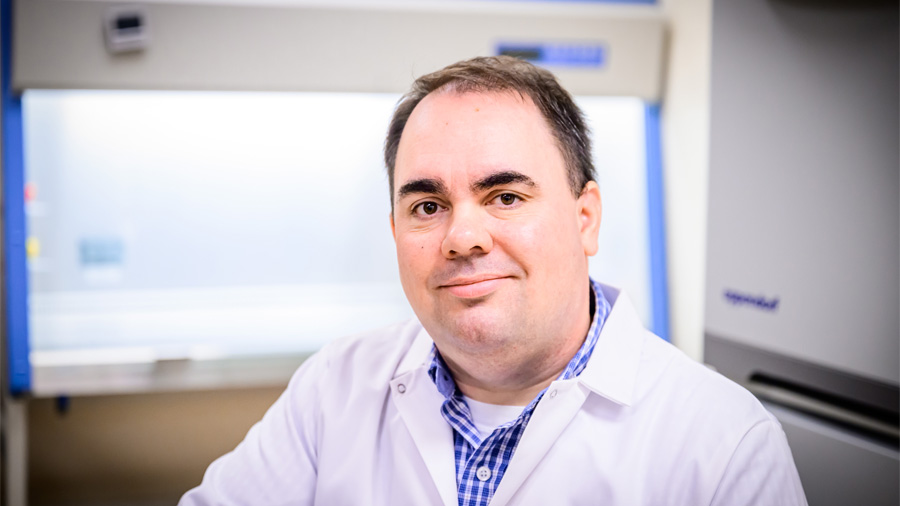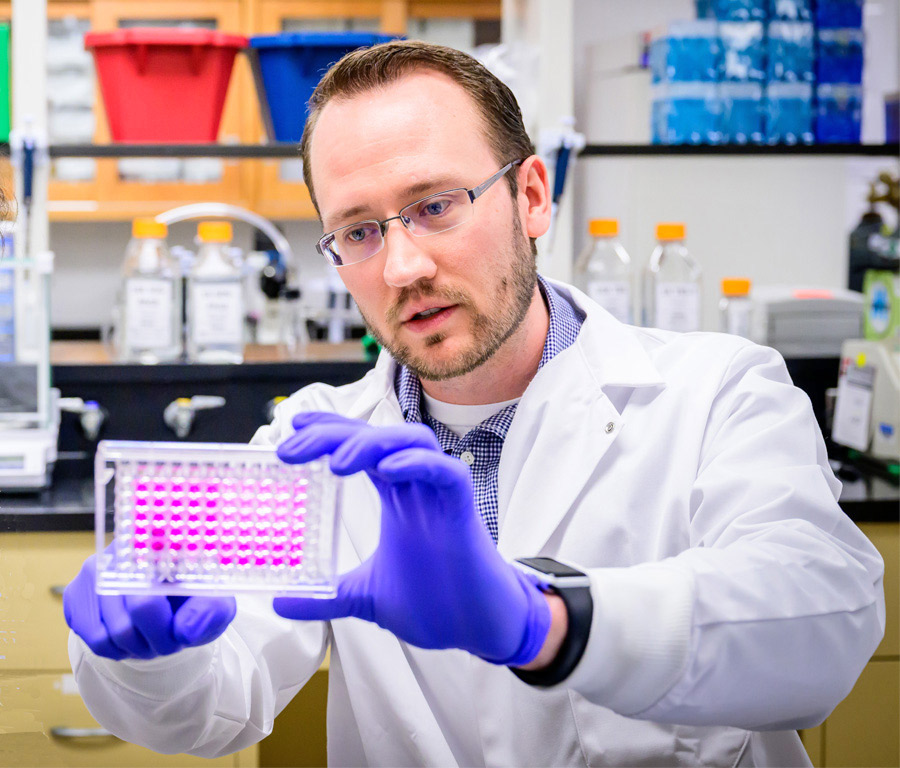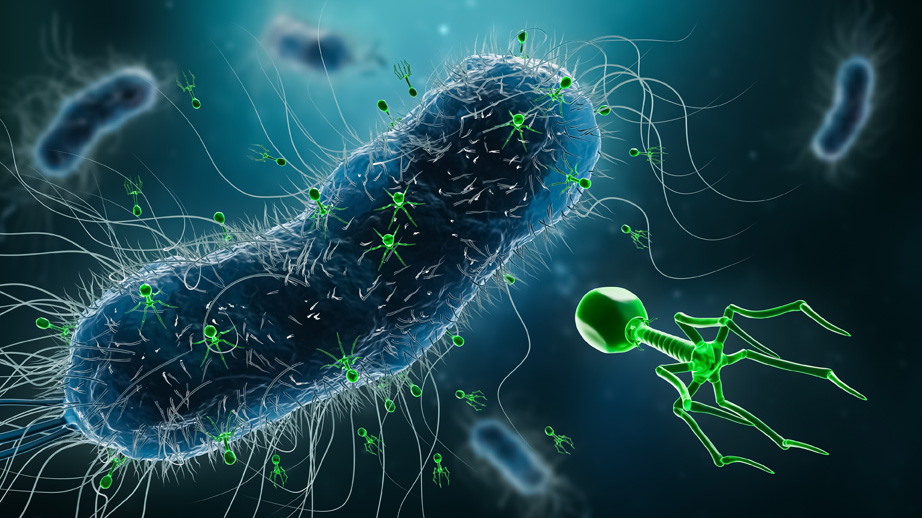The worldwide prevalence of obesity more than doubled between 1990 and 2022, according to the World Health Organization. This chronic complex disease has been linked to increased risk of type 2 diabetes, heart disease, and certain cancers as well as negatively affecting quality of life.
While a host of factors contributes to the rise in obesity, Dr. Christopher Gaulke has a plan for sorting out relationships among a few likely suspects. With NIH funding through a Katz Early Stage Investigator R01 grant, Dr. Gaulke’s lab has been looking at whether early life exposure to toxicants like herbicides causes the microbiome to change in a way that promotes obesity.
“We know that imbalances in the gut microbiota correlate with altered lipid metabolism and increased body mass,” he says. “And we know that herbicides disrupt gut microbial communities in ways that match up with disruptions found in the microbiomes of obese individuals.
“This study puts these elements together in a reliable animal model to help quantify the obesity-related risk posed by herbicide exposure. We also hope to identify the molecular pathways involved in herbicide-disrupted fat accumulation and to guide future research that could lead to therapies for obesity.”
A Change in Direction
Dr. Gaulke’s background spans both “wet lab” microbiology—his PhD at the University of California, Davis, focused on human and simian immunodeficiency viruses (HIV/SIV)—and computational biology—his post-doc at Oregon State University looked at microbiomes. Microbiome research requires data science tools given the vast complexity and scale of the data generated. The human microbiome alone involves trillions of microorganisms and terabytes of data.
“Marrying those two perspectives, bench science and computational skills, positions my lab with a unique skill set in biomedicine,” notes Dr. Gaulke.
More to Explore
Christopher Gaulke also leads one phase of a multi-institutional project to identify bacteriophages promising for the promotion of oral health.
After joining the faculty of the Department of Comparative Biosciences at the University of Illinois College of Veterinary Medicine in 2020, Dr. Gaulke wanted to tap into his new department’s strength in toxicology. He chose to look at the toxic effects of herbicides on the microbiome in part because herbicides are ubiquitous environmental toxicants in the agricultural Midwest.
The NIH grants named for Stephen I. Katz support innovative projects in an area of science that represents a change in research direction for an early stage investigator and for which no preliminary data exist. Dr. Gaulke’s proposal scored well and eventually gained funding in December 2024.
Zebrafish and Herbicides
The research uses zebrafish to explore the impact of early life-stage exposure to three herbicides—glyphosate, atrazine, and 2,4-D—on adipose levels. Dr. Gaulke had worked extensively with zebrafish in previous microbiome studies.

“The zebrafish has emerged as a promising model of host-microbiome interactions,” he says. “Despite substantial differences between zebrafish and humans, the two species’ gut microbial communities operate very similarly.
“Connections between microbiome function and host health identified in zebrafish have proved translationally relevant in other species.”
Additionally, zebrafish provide a good model for adiposity (excessive accumulation of body fat). Besides their genetic and physiological similarity to humans, zebrafish as a research model offer the advantages of not costing very much to maintain in the laboratory, reproducing rapidly, and having a lifespan conducive to prospective studies.
“We’ve made excellent progress on the study,” Dr. Gaulke reports. “Lydia Okyere, one of my graduate students, has begun reaping data reflecting 6 months of exposure to these toxicants.”
Their findings could map the impact on the microbiome resulting from exposure to herbicides during development. And those findings could lead to novel approaches for treating obesity.
Photos of Dr. Gaulke by Fred Zwicky.




